Hamilton at Work
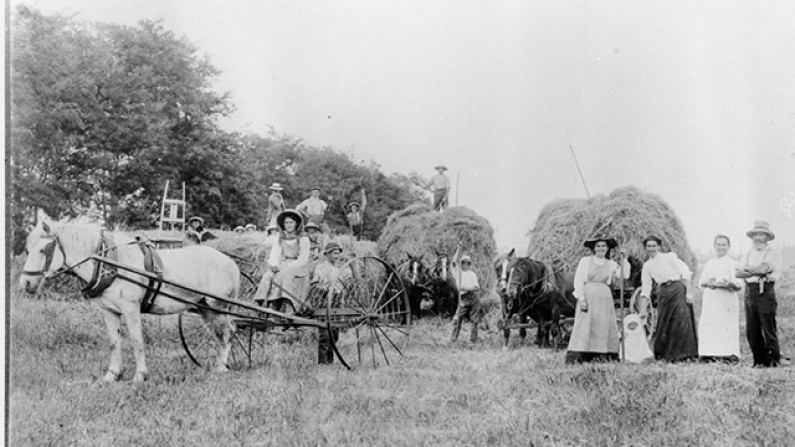
Explore how work in and around Hamilton has changed through the years.
Cover Image: Haymaking at Waihou, Te Aroha, c. 1910. HCL_02222
At Home and On the Land
Early settlers in Hamilton had to clear and sometimes drain their swampy farmland before they could fertilise and purchase stock. They had little money for tools and machinery, if they were available, and even established farmers had large amounts of manual labour to do such as sowing and reaping crops, rearing and selling stock and general maintenance.
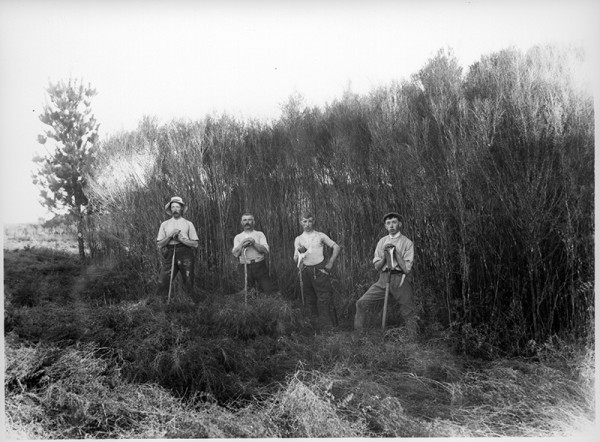
Clearing scrub with scythes, c.1900. HCL_03686
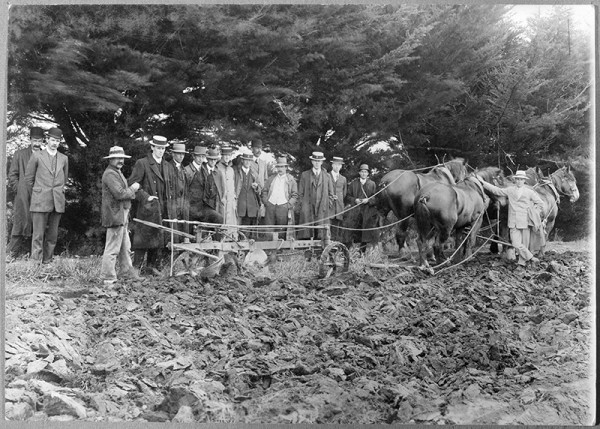
Ploughing demonstration at Ruakura, c. 1910. HCL_04964
As Hamilton expanded new infrastructure was required, particularly a reliable way to transport people and goods across the Waikato River. Here the Railway Bridge is being built.

The Railway Bridge under construction, c.1882 HCL_07258
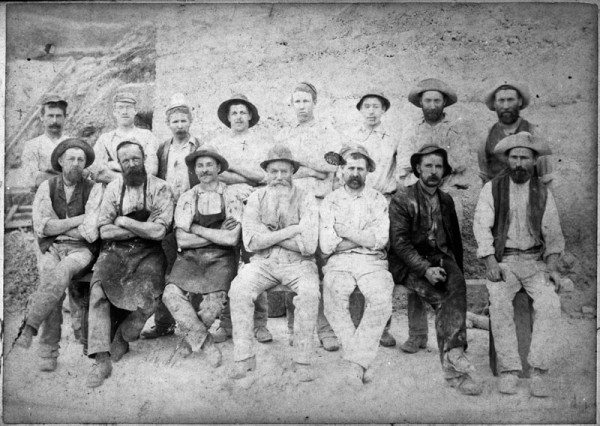
Men who worked on the Railway Bridge, c.1882 HCL_07257
As the population of Hamilton grew, so too did the variety of businesses. Many items were made locally by hand as at P. McMahon’s bootmakers shop and Goyle’s Furnishing Warehouse.
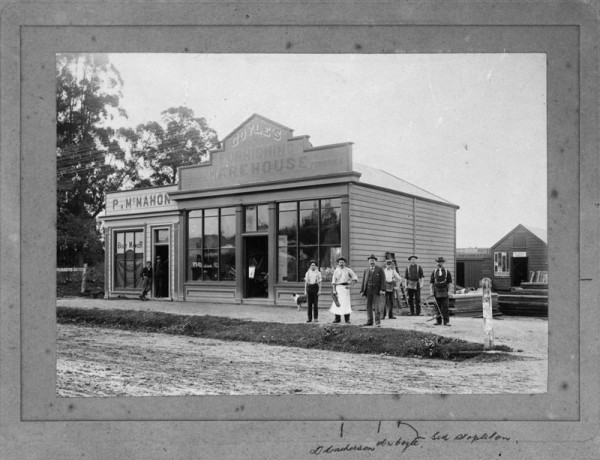
“Hamilton is there because it is the centre of a great region where to an amazing degree; grass is transmuted into tangible wealth.” O.N. Gillespie, New Zealand Railways Magazine, June 1937

The whole family were expected to help out. Haymaking at Waihou, Te Aroha, c. 1910. HCL_02222
“They worked very, very hard…we were all involved and we didn’t think anything of it.
And there was no such thing as saying ‘I’m not doing to do it…we just loved it.”
Josie Devitt on haymaking in Hamilton (OH466)
“Everybody helped each other in those days,” remembered Mary Campbell who grew up on a Hillcrest farm
in the 1920s. The mend would plan their haymaking days together, “so they could help each other all
round the district.” (OH288)
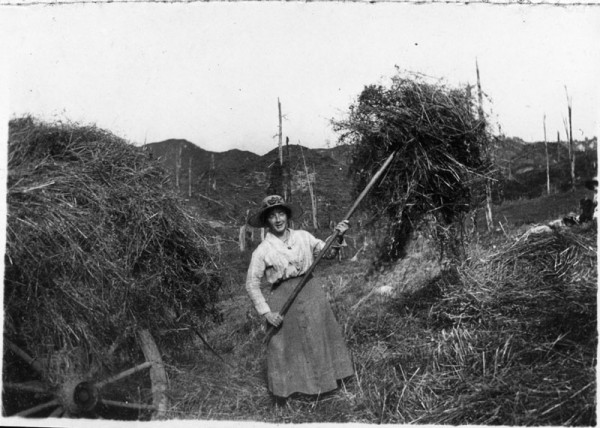
Hands and a bucket were the only equipment needed for the early farmers. Milking the cows was a family affair with children expected to help before and after school. Milking twice a day for 9-10 months of the year commonly caused ‘milker’s wrist’, a repetitive strain injury. Milking machines were initially faced with reluctance from the farmers, they feared it would injure their cows. However by the end of World War 1 over 7600 machines were being used nationwide.
Farmers grew their herds alongside the growing demand for dairy products. Hired workers were brought in to help with with the increase and it was said “…to milk 8 to 10 cows in full milk in an hour must be considered as being really smart work.”
“Mum and we girls milked 40 cows by hand.” Pearl James on farming in Hillcrest in the 1930s (OH290)
Another early industry in the region was milling. Mills of many kinds ran across the district including flour mills, flax mills and saw mills.
“Monday. Dull day. I started smutting at 8 a.m. Finished at 3. Minogue brought 1050 sharps to John Knox, brought up boilers etc. Second load 500 flour to Martin. Manders called. Left 2 bags flour at Ridler’s Gap for him. Capt. Beere absent. I worked until one at night. 3 young pigs came to day.” Extract from the diary of John Waldron Wright, miller on Ohaupo Road. 10 September 1877. MSC14
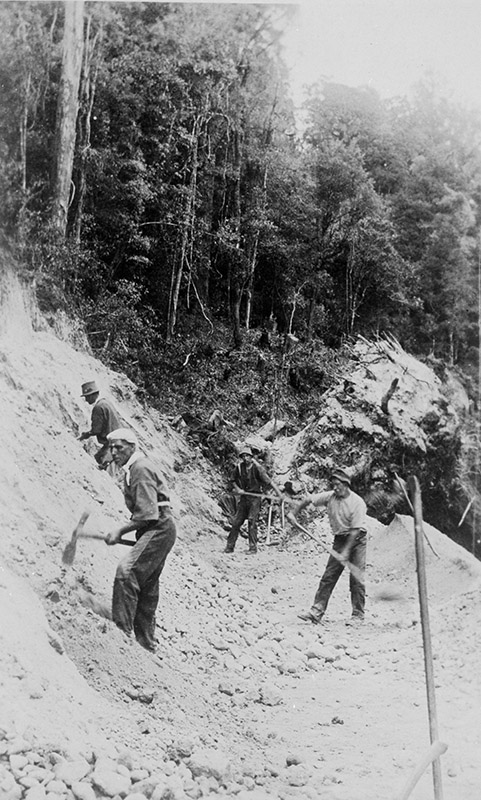
Constructing a tramline for the removal of timber and clearing the way with picks and shovels, pre 1926. HCL_09946
Ellis & Burnard were sawmillers and timber merchants in the Waikato and King Country from 1896, with their headquarters in Hamilton from 1905.
Housework used to involved hard physical labour all done by hand. Electricity helped make heavy work lighter, first on the farm and then moving inside the house. By the 1930s appliances were common in wealthy homes and slowly became standard over the next few decades.
Before the washing machine it was an all-day job to get the laundry cleaned. Items were scrubbed, boiled, rinsed and wrung out before finally bring left to dry. It wasn’t until 1956 that over half of New Zealand households could afford to have their own machine.
“Nearly everybody had a chook house which brought in the flies and the smell” remembers Ann Gibson
who grew up in Frankton during the 1930s-40s. “You didn’t have the corner store on every corner.
You really were self-sufficient.” (OH471)
Most households in the 19th and early 20th Centuries had vegetable gardens, and until the Second World War they could cover an area almost the same size as the house. Usually the vegetable garden was the husband’s job while the wife took responsibility of preserving and cooking the “fruits of his labour”.
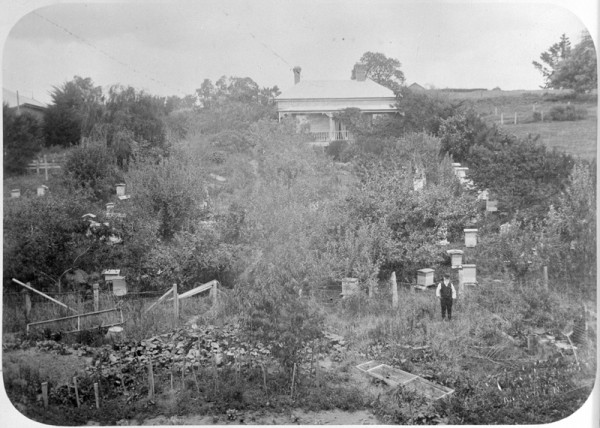
Technology and Construction
People worked hard to build Hamilton. They cleared land, built roads and bridges, placed railway tracks, implemented water suppliers, sewers, electrical grids, telecommunications, drainage and other infrastructure. They built houses, shops, schools and other buildings. Parks, gardens and amenities were created and transport networks put in place.
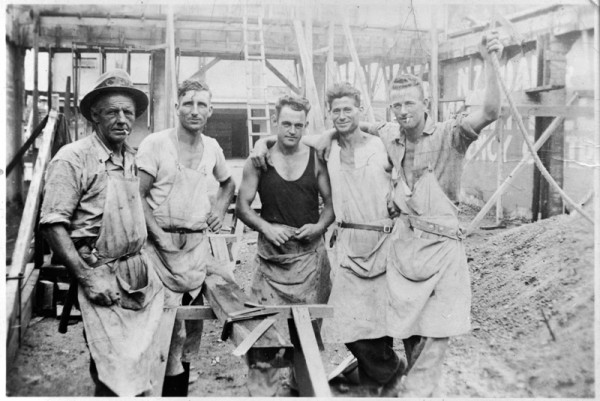
Construction workers at the “Ford Sales and Services” building, c.1920s HCL_02153
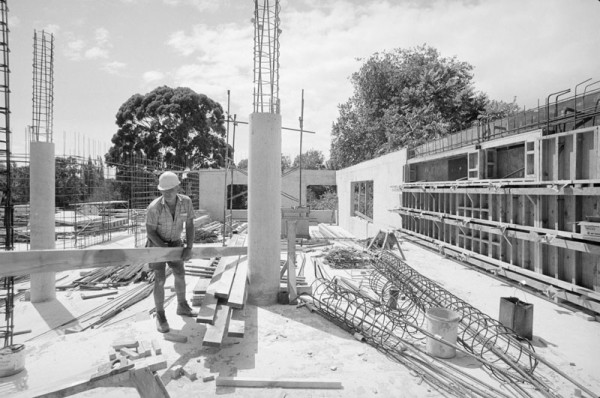
The Waikato Museum of Art and History under construction, c.1985 HCL_M01363.18
Construction and maintenance has provided work for people whether they are apprentices, volunteers, employees or on work schemes.
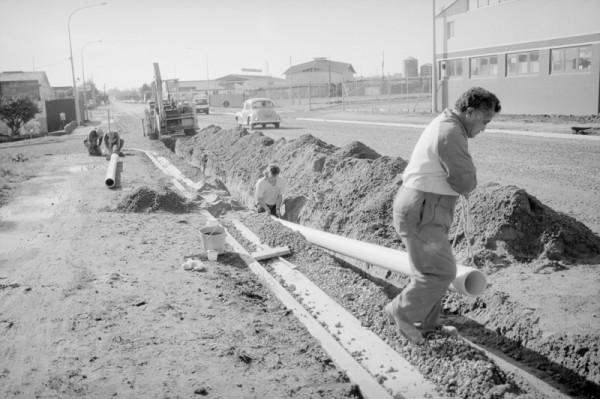
Laying pipes on Norton Road, c. 1989 HCL_M02282.12
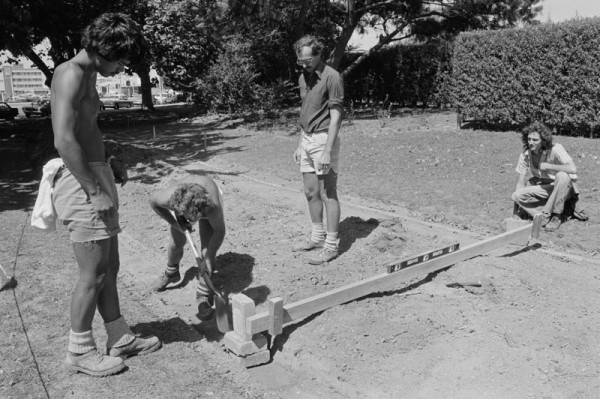

The Waikato has always been associated with farming and industry. As the decades passed by, technological improvements such as the invention of the moto engine, electricity, the telephone, automation and the computer have changed the way we work.
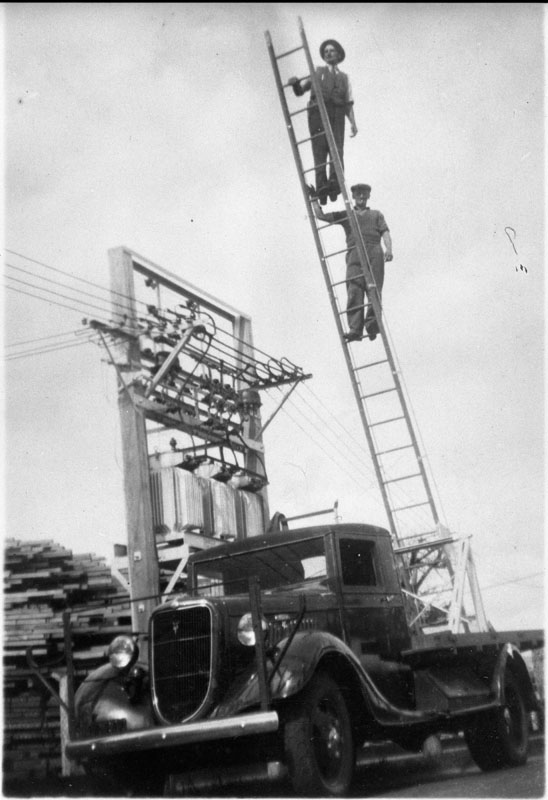
Installation of power lines, c.1950. HCL_2497
Tasks that were once done by humans and animals in the fields became increasingly easier with the invention of steam powered engines in the late 1800s. Wind and water were also used in several industries to power mills and later generate electricity.
Before mechanical diggers, trucks and tarmac our roads were very basic. In the picture below, the road was lowered and widened by horse drawn loughs and scoops.
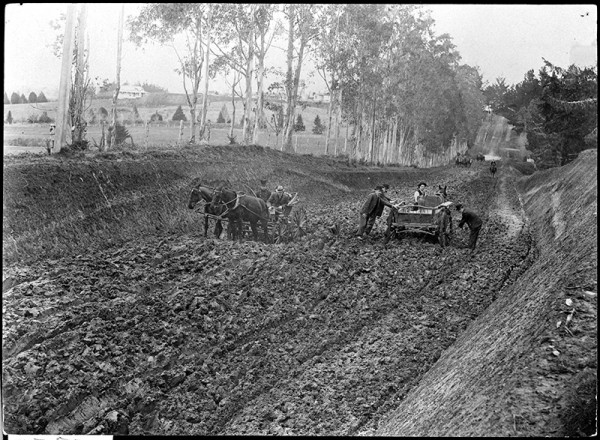
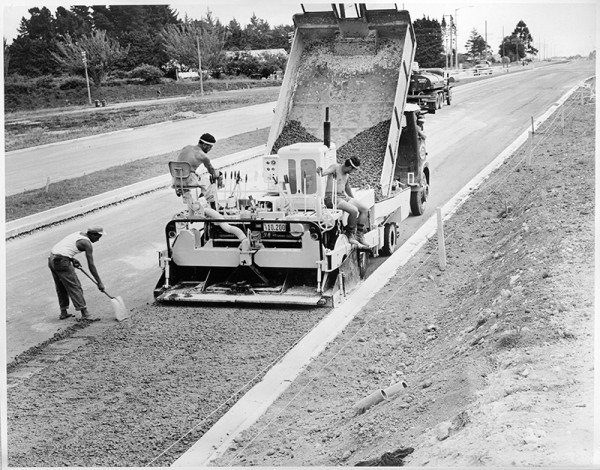 Vehicles and construction work on Cobham Drive, 1964. HCL_04600
Vehicles and construction work on Cobham Drive, 1964. HCL_04600
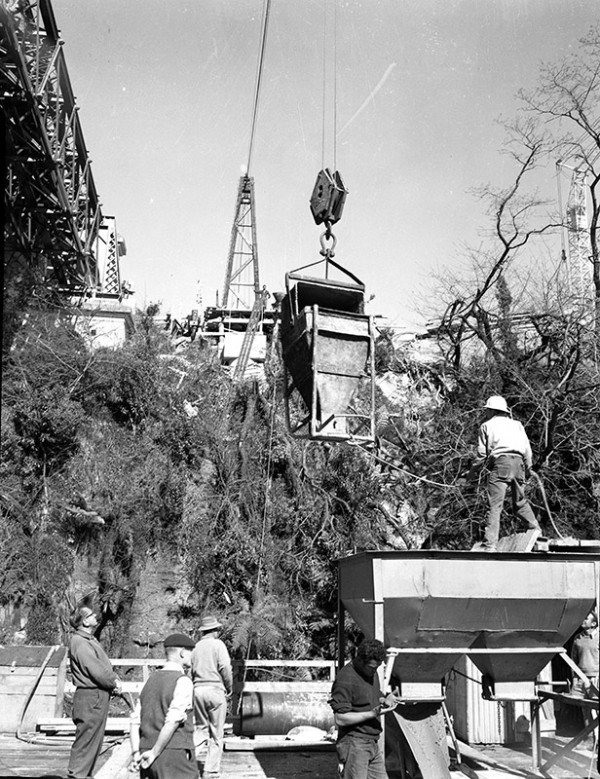
Work on the new lower Claudelands Railway Bridge. It was opened in 1964. HCL_07744
Shovels, picks and sledge hammers are still useful today, but the pneumatic drill really gets the job done quickly. Originally air and oil powered, the drill was invented in the late 1800s.
This worker is busy removing the Bledisloe Hall from the old Waikato Winter Show grounds, a different attitude to PPE than today!
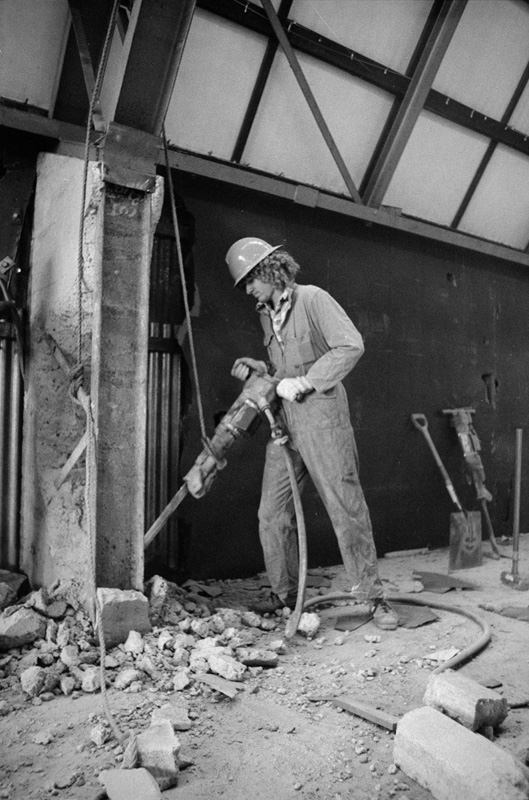
Automation has played a large part in changing our working conditions. Both the images below are of Findlay’s Bakeries, approximately 60 years apart.
The images also show the increased emphasis on hygiene.
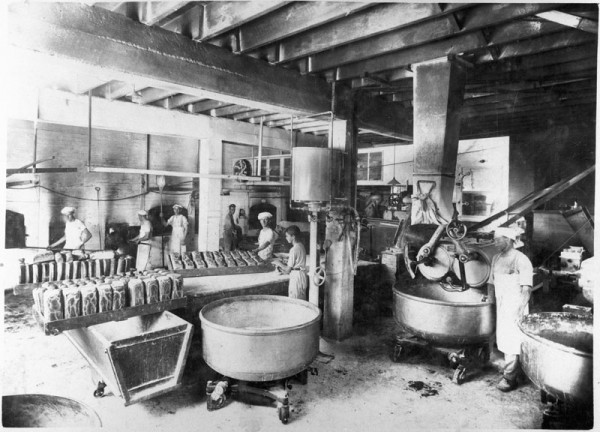
Findlay's Bakeries, c.1921 HCL_02564
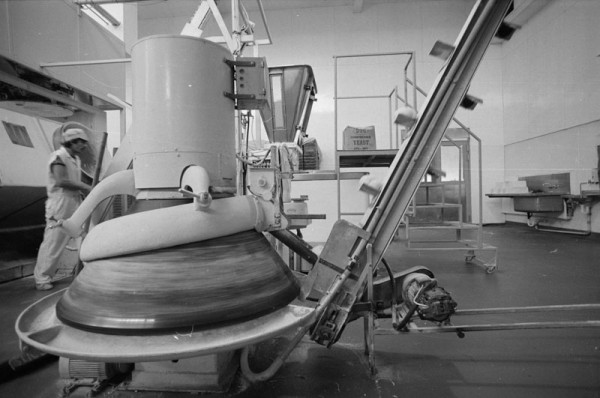
Findlay's Bakeries, c.1985 HCL_M01478.21
